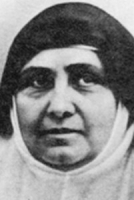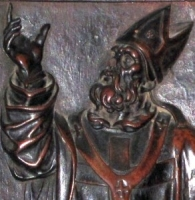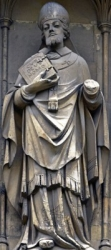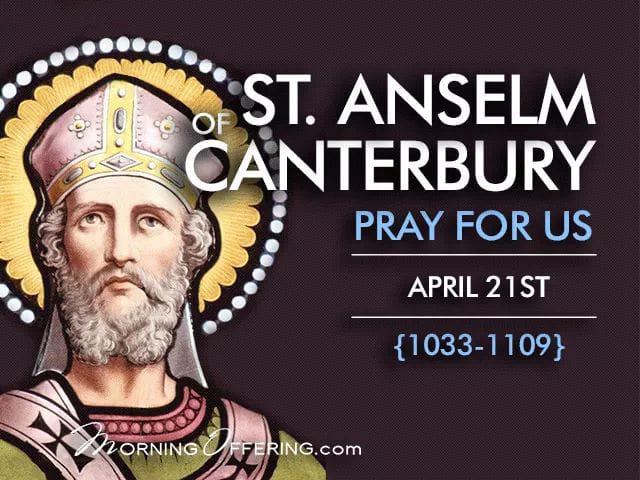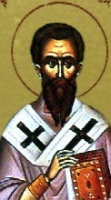Saint George
புனிதர் ஜார்ஜ்
(St. George of Lydda)
மறைசாட்சி:
(Martyr)
பிறப்பு: கி.பி. 280
லிட்டா, சிரியா பாலஸ்தீனா, ரோம பேரரசு
(Lydda, Syria Palaestina, Roman Empire)
இறப்பு: ஏப்ரல் 23, 303
நிக்கோமீடியா, பெர்த்தினியா, ரோம பேரரசு
(Nicomedia, Birthynia, Roman Empire)
ஏற்கும் சமயம்:
ரோமன் கத்தோலிக்க திருச்சபை
(Roman Catholic Church)
கிழக்கு கத்தோலிக்க திருச்சபைகள்
(Eastern Catholic Churches)
ஆங்கிலிக்கன் சமூகம்
(Anglican Communion)
லூதரனியம்
(Lutheranism)
கிழக்கு மரபுவழி திருச்சபை
(Eastern Orthodox Church)
கிழக்குத் திருச்சபைகள்
(Church of the East)
ஓரியண்டல் மரபுவழி திருச்சபை
(Oriental Orthodoxy)
ரோமன் கத்தோலிக்க திருச்சபையுடன் ஒத்திசைவுள்ள பிரேசிலிய மதம் அல்லது திருச்சபை
(Umbanda - Syncretic Brazilian Religion)
முக்கிய திருத்தலங்கள்:
புனித ஜார்ஜ் தேவாலயம், லிட்டா, இஸ்ரேல்
(Church of Saint George, Lydda, Israel)
சித்தரிக்கப்படும் வகை:
ஓர் படைவீரராக கவச உடை அணிந்து,
கையில் சிலுவை முனை கொண்ட ஈட்டியை ஏந்தி,
வெண்குதிரையில் அமர்ந்த வண்ணம் பறக்கும் நாகம் அல்லது இறக்கையுள்ள முதலையை (Dragon) கொல்பவராகச் சித்தரிக்கப்படுகிறார்.
மேற்கத்திய சபைகளில் கவசம் அல்லது கேடயம் அல்லது பட்டியில் புனித ஜார்ஜின் சிலுவை காட்டப்பட்டுள்ளது.
பாதுகாவல்:
உலகின் பல பகுதிகளைப் பாதுகாப்பதாக நம்பப்படுகிறது.
நினைவுத் திருநாள்: ஏப்ரல் 23
புனிதர் ஜார்ஜ், ரோமன் படைத்துறையில் பணியாற்றிய ஓர் கிரேக்க வீரர் ஆவார். இவரது தந்தை ஆசிய மைனரைச் சேர்ந்த "கப்பாடோசியா" (Cappadocia) எனுமிடத்தில் இருந்த "கெரோன்ஷியஸ்" (Gerontius) என்பவராவார். இவரது அன்னையார் "லிட்டா" (Lydda) நகரைச் சேர்ந்த "பொலிக்ரோனியா" (Polychronia) ஆவார். தற்போது இசுரேலில் உள்ள இந்த நகரம் கி.மு. 333 முதலே அலெக்சாண்டர் கைப்பற்றிய பின்னர், கிரேக்கர்கள் வாழும் நகரமாக இருந்தது.
புனிதர் ஜார்ஜ் முதலில் ஒரு படைவீரராக பணியாற்றினார். பின்னர் ரோமன் படைத்துறையில் அதிகாரியாக பதவி ஏற்றம் பெற்றவர், பின்னர் கிறிஸ்தவ படையில் சேர்ந்து பணியாற்றியுள்ளார். கிறிஸ்தவர்களால் வேத சாட்சியாக வணங்கப்படுபவர்.
கத்தோலிக்க (மேற்கத்திய கிழக்கு ரைட்டுகள்), ஆங்கிலிக்க, கிழக்கு மரபுவழி, மற்றும் கிழக்கத்திய மரபுவழி திருச்சபைகளின் புனிதர்களின் வரலாற்றில் புனிதர் ஜார்ஜ் மிகவும் வணங்கப்படும் புனிதர்களில் ஒருவராக உள்ளார். புனிதர் ஜார்ஜும் டிராகனும் கதை மூலமாக இவர் நினைவு கூறப்படுகிறார்; பதினான்கு புனித உதவியாளர்களில் ஒருவராவார். இவரது திருவிழா ஏப்ரல் 23 அன்று கொண்டாடப்படுகிறது. படைத்துறை புனிதர்களில் மிக முக்கியமானவராக கருதப்படுகிறார்.
புனிதர் ஜார்ஜ், பாலஸ்தீன நாட்டில், விட்டா என்ற ஊரில் கொனிஸ்டாட்டின் அரசன் காலத்திற்கு முன்பு மறைசாட்சியாக இறந்தார். இவர் எப்படி இறந்தார் என்பதைப்பற்றி தெளிவாக அறியமுடியவில்லை. இருப்பினும் சில வரலாறுகள் இவ்வாறு கூறுகின்றது.
அவர் முதலிலிருந்த படையில், தான் வகித்த பெரிய பதவியைக் கிறிஸ்துவுக்காக உதறி தள்ளிவிட்டு, தன் உடைமைகள் அனைத்தையும் ஏழைகளுக்கு கொடுத்துவிட்டு வந்துள்ளார். பின்பு தமக்கென்று எதையும் வைத்துக்கொள்ளாமல், உலக கவலைகளுக்கு இடம் கொடுக்காமல், விசுவாசம் என்ற மார்பு கேடயத்தை அணிந்து கொண்டார். பிறகு கிறிஸ்துவுக்காக தன் உயிரை தியாகம் செய்யவும் துணிந்தார்.
கிறிஸ்துவின் துணிச்சலான போர்வீரரான இவர், தூய ஆவியால் உந்தப்பட்டு, அன்பு என்னும் நெருப்பால் ஈர்க்கப்பட்டார். சிலுவையின் வெற்றிக்கொடியை ஏந்தி இறுதிவரை விசுவாசத்திற்காக போராடினார். தீமையின் இருப்பிடமாகிய அலகையை வெற்றி கொண்டார்.
தன்னுடன் இருந்த தோழர்களையும், பாடுகளை துணிவுடன் ஏற்று போரிட ஊக்குவித்தார், அவர் உடல் எதிரிகளிடம் ஒப்படைத்தபோது, அவரின் ஆன்மாவை மட்டும் இறைவன் பாதுகாத்தார் என்பதில்தான் இவர் கிறிஸ்துவின் மீது கொண்டிருந்த விசுவாசம் வெளிப்பட்டது.
இவரது உருவம் உலகின் பல்வேறு நாடுகளில் அஞ்சல் துறையினரால் பயன்படுத்தப்படுவதுபோல் மற்ற யாருடைய உருவமும் வெளிவருவதில்லை. இவ்வாறு அஞ்சல்தலை மூலமும் இவருக்கு வணக்கம் செலுத்தப்படுகின்றது. இந்த முத்திரைகளில் புனிதர் குதிரைமீது அமர்ந்து அலகையுடன் போரிடுவதை பார்க்கலாம். இதில் அவர் பொய்மைக்கு எதிராக பெற்ற வெற்றியை காணலாம். இவர் வாழும்போதே இறைவன் இவர் வழியாக ஏராளமான அற்புதங்களை செய்துள்ளார்.
இவர் பல நிலபகுதிகளையும் தொழில்களையும் அமைப்புக்களையும் நோயாளிகளையும் காப்பதாக நம்பப்படுகிறது. இவரது பாதுகாவலில் உள்ள நிலப்பகுதிகளில் இந்தியாவும் ஒன்று. மற்றும் - ஜார்ஜியா, இங்கிலாந்து, எகிப்து, பல்கேரியா, அரகொன், காத்தலோனியா, ரூமேனியா, எத்தியோப்பியா, கிரீசு, ஈராக், லித்துவேனியா, பாலஸ்தீனம், போர்ச்சுகல், செர்பியா, உக்ரைன் மற்றும் ரஷியா ஆகியன முக்கிய நிலப்பகுதிகள் ஆகும்.
Also known as
• Jirí, Jordi, Zorzo
• Victory Bringer
Additional Memorials
• 3 November (Russian Orthodox)
• fourth Sunday in June (Malta)
• third Sunday in July (Gozo)
• 23 November (Georgia)
Profile
Soldier. Martyr. That's all we know for sure.
Several stories have been attached to Saint George, the best known of which is the Golden Legend. In it, a dragon lived in a lake near Silena, Libya. Whole armies had gone up against this fierce creature, and had gone down in painful defeat. The monster ate two sheep each day; when mutton was scarce, lots were drawn in local villages, and maidens were substituted for sheep. Into this country came Saint George. Hearing the story on a day when a princess was to be eaten, he crossed himself, rode to battle against the serpent, and killed it with a single blow with his lance. George then held forth with a magnificent sermon, and converted the locals. Given a large reward by the king, George distributed it to the poor, then rode away.
Due to his chivalrous behavior (protecting women, fighting evil, dependence on faith and might of arms, largesse to the poor), devotion to Saint George became popular in the Europe after the 10th century. In the 15th century his feast day was as popular and important as Christmas. Many of his areas of patronage have to do with life as a knight on horseback. The celebrated Knights of the Garter are actually Knights of the Order of Saint George. The shrine built for his relics at Lydda, Palestine was a popular point of pilgrimage for centuries. One of the Fourteen Holy Helpers.
Died
tortured and beheaded c.304 at Lydda, Palestine
Patronage
• against herpes • against leprosy • against plague • against skin diseases • against skin rashes • against syphilis • agricultural workers • Aragon • archers • armourers • Boy Scouts • butchers • Canada • Cappadocia • Catalonia • cavalry • chivalry • Crusaders • England • equestrians • Ethiopia • farmers • field hands • field workers • Georgia • Germany • Greece • halberdiers • horsemen • horses • husbandmen • knights • lepers • Lithuania • Malta • Montenegro • Order of the Garter • Palestine • Palestinian Christians • Portugal • riders • Romanian Army • saddle makers • saddlers • Serbia • sheep • shepherds • soldiers • Teutonic Knights • 2 dioceses • 181 cities •
Blessed Maria Gabriella Sagheddu
Also known as
• Maria Gabriella
• Mary-Gabrielle Sagheddu
Profile
Born to a family of shepherds. As a child she was described as obstinate, critical, protesting, and rebellious - but loyal, and obedient; she would say no to a request - but act on it at once. At 18 she became gentler, her temper abated, she became involved in prayer and charity, and joined "Azione Cattolic," a Catholic youth movement. At 21 she entered the Trappestine monastery of Grottaferrata. When she was accepted, her attitude finally became "Now do what You will." When the community's leader explained a request for prayer and offering for the great cause of Christian Unity, Maria Gabriella felt compelled to offer her young life to the cause. Though she'd never been sick before, she suddenly developed tuberculosis. In a mere 15 months spent in prayer for Unity, it took her to her death.
Born
17 March 1914 at Dorgali, Sardinia, Italy
Died
• 23 April 1939 during Vespers of tuberculosis
• body found incorrupt in 1957
• relics in a chapel at the Monastero Trappiste Vitorchiano near Viterbo, Italy
Beatified
25 January 1983 by Pope John Paul II
Patronage
• against bodily ills or sickness
• against death of parents
• against impoverishment or poverty
• ecumenism
• sick people
Saint Adalbert of Prague
புனிதர் அடால்பர்ட்
(St. Adalbert of Prague)
ஆயர் மற்றும் மறைசாட்சி:
(Bishop and Martyr)
பிறப்பு: 956
லிபைஸ் நாட் ஸிட்லினோ, பொஹேமியா, ஸ்செச்சியா
(Libice nad Cidlinou, Bohemia, Czechia)
இறப்பு: ஏப்ரல் 23, 997
ட்ரூசோ, ப்ருஷியா
(Truso, Prussia)
ஏற்கும் சமயம்:
ரோமன் கத்தோலிக்க திருச்சபை
(Roman Catholic Church)
கிழக்கு மரபுவழி திருச்சபை
(Eastern Orthodox Church)
புனிதர் பட்டம்: 999
திருத்தந்தை இரண்டாம் சில்வஸ்ட்டர்
(Pope Sylvester II)
முக்கிய திருத்தலம்:
க்நீஸ்னோ, ப்ராக்
(Gniezno, Prague)
நினைவுத் திருநாள்: ஏப்ரல் 23
பாதுகாவல்:
போலந்து, பொஹேமியா, எஸ்டேர்கோம் உயர்மறைமாவட்டம்
(Poland, Bohemia, Archdiocese of Esztergom)
"வோஜ்டெக்" (Vojtěch) எனும் இயற்பெயர் கொண்ட புனிதர் அடால்பர்ட், பொஹேமியா'வின் மறை பணியாளரும், "ப்ராக்" மறைமாவட்ட ஆயரும் (Bishop of Prague), "ஹங்கேரிய" (Hungarians), "போல்ஸ்" (Poles) மற்றும் "ப்ருஷியன்" (Prussians) மக்களின் மறைபோதகரும் ஆவார். இவர், "பால்டிக் ப்ருஷியன்" (Baltic Prussians) இன மக்களை கிறிஸ்தவத்திற்கு மனம் மாற்றும் முயற்சியில் மறைசாட்சியாக கொல்லப்பட்டார்.
தற்போது, "செக் குடியரசு” (Czech Republic), “போலந்து” (Poland), “ஹங்கேரி” (Hungary) மற்றும் “ஜெர்மனி” (Germany) ஆகிய நாடுகளால் பெரிதும் போற்றப்படும் புனிதரான அடால்பர்ட், அக்காலத்தில் கிறிஸ்துவின் நற்செய்திகளின் எதிர்ப்பு ஒருபோதும் இவரை சோர்வடையச் செய்யவில்லை.
பொஹெமியாவின் (Bohemia) பிரபுத்துவ குடும்பமொன்றில் பிறந்த இவருடைய தந்தையார் “ஸ்லாவ்னிக்” (Slavník) ஆவார். இவரது தாயார் “ஸ்ட்ரேசிஸ்லாவா” (Střezislava) ஆவார். சிறு வயதிலேயே பெரும் நோயோன்றினால் பாதிக்கப்பட்டு பிழைத்த இவரை கடவுளின் சேவையில் அர்ப்பணித்திட இவரது பெற்றோர் தீர்மானித்திருந்தனர்.
சிறந்த கல்விமானான இவர், தமது ஆரம்ப கல்வியை "புனிதர் அடால்பர்ட்" (Saint Adalbert of Magdeburg) எனும் புனிதரிடம் கற்றார். தமது “உறுதிப்பூசுதல்” (Confirmation) திருவருட்சாதனம் பெரும் நிகழ்வின்போது, தமது ஆசிரியருக்கு மரியாதை செலுத்தும் விதமாக, ஆசிரியரது பெயரையே தமது ஆன்மீக பெயராக ஏற்றார்.
981ம் ஆண்டு, இவரது ஆசிரியரான "புனிதர் அடால்பர்ட்" (Saint Adalbert of Magdeburg) மரித்ததும், இவர் பொஹேமியா திரும்பினார். பிறகு, "ப்ராக்" மறைமாவட்ட ஆயரும் (Bishop of Prague) “டயட்மார்” (Dietmar of Prague) என்பவர், இவரை கத்தோலிக்க குருவாக அருட்பொழிவு செய்வித்தார். 982ம் ஆண்டு, ஆயர் “டயட்மார்” (Dietmar of Prague) மரித்துப் போகவே, தமது 27 வயதிலேயே ப்ராக் (Prague) மறைமாவட்டத்தின் ஆயராக இவர் தேர்வு செய்யப்பட்டார். அவரது நற்பணிகளை எதிர்த்தவர்களின் வற்புறுத்தலால் எட்டு வருடங்களின் பின்னர் நாட்டை விட்டு வெளியேற நேர்ந்தது.
காலப்போக்கில், ப்ராக் மக்கள் அவரை தங்களது ஆயராக திரும்பி வர வேண்டினார்கள். ஆனால், குறுகிய காலத்திலேயே ஆலயத்தின் பரிசுத்தம் கெடும் வகையில், விபச்சார குற்றம் சாட்டப்பட்ட ஒரு பெண்ணை கையை பிடித்து இழுத்து மான பங்கம் செய்ததாக பொய்க்குற்றம் சாட்டப்பட்டு மீண்டும் நாடு கடத்தப்பட்டார்.
ஹங்கேரியில் சிறிது காலம் மறைபோதனை செய்த பின்னர், "பால்டிக்" கடற்கரையோரம் (Baltic Sea) வசித்த மக்களுக்கு நற்செய்தி போதிக்க சென்றார். அவரும் அவருடன் சென்ற இரு நண்பர்களும் "பாகனீய குருக்களால்" (Pagan Priests) மறைசாட்சியாக கொல்லப்பட்டனர்.
Also known as
• Adalbert of Praha
• Apostle of Bohemia
• Apostle of the Prussians
• Apostle of the Slavs
• Adalberto, Adelbert, Adalbert, Voitech, Voytech, Voytiekh, Wojciech
Profile
Born to the Bohemian nobility. He took the name of Saint Adalbert of Magdeburg, the archbishop who healed, educated and converted him. Bishop of Prague (in the modern Czech Republic on 10 February 982. Friend of Emperor Otto III. Adalbert encouraged the evangelization of the Magyars, and worked on it with Saint Astricus. Opposed by the nobility in Prague and unpopular in the area, he withdrew to Rome, Italy and became a Benedictine monk, making his vows on 17 April 990; Pope John XV sent him back to Prague. anyway. Founded the monastery of Brevnov. Met more opposition from the nobility, and returned to Rome. There being no hope of his working in Prague, he was allowed to (unsuccessfully) evangelize in Pomerania, Poland, Prussia, Hungary, and Russia. He and his fellow missionaries were martyred by Prussians near Koenigsberg or Danzig at the instigation of a pagan priest. Not long before his death, Adalbert met and was a great inspiration to Saint Boniface of Querfurt.
Born
c.957 in Libice nad Cidlinou, Bohemia (part of modern Czech Republic) as Voytech
Died
• struck in the head on 23 April 997 in Pomerania near Danzig (in modern Poland)
• relics forcibly taken to Prague in 1039
Canonized
999
Patronage
• Bohemia
• Czech Republic
• Poland
• archdiocese of Prague, Czech Republic
• Prussia
Blessed Teresa Maria of the Cross
Also known as
• Bettina (childhood nickname)
• Teresa Adelaide Cesina Manetti
• Teresa Maria de la Cruz
• Teresa Maria della Croce
• Teresa Maria Manetti
Profile
Daughter of Salvatore Manetti and Rosa Bigagli, Teresa had one brother, Adamo Raffaello; she lived her whole life in her small village, and her father died when Teresa was three years old. She was always known as a pious child, and made her First Communion on 8 May 1859. A natural organizer, when she was 18 years old Teresa gathered a group of young women who lived in common and worked as teachers of poor children; they were inspired by the writings of Saint Teresa of Avila, and had a special devotion to her. She organized and joined a group of Carmelite tertiaries on 16 July 1876, taking the name Teresa Maria of the Cross. Joined the Discalced Carmelites on 12 July 1888. Over the next few years she started schools in several Italian cities, each with it's little group of Carmelite teachers. Her Institute of teaching nuns received approval from Pope Saint Pius X on 27 February 1904 as the Suor Carmelite di Santa Teresa di Firenze (CSTF; Carmelite Sisters of Saint Teresa of Florence) with a mission to teach and care for children, especially orphans. Like her inspiration, Saint Teresa of Avila, Teresa of the Cross met with much resistance to her work with the poor, much slander about her personal life, and a long period of spiritual dryness, but all who met her commented on the air of joy and peace she brought to her work.
Born
2 March 1846 at Campi Bisenzio, Florence, Italy as Teresa Adelaide Cesina Manetti
Died
• 3 April 1910 at Campi Bisenzio, Florence, Italy of natural causes
• relics translated to the monastery church at Campi Bisenzio on 22 April 1912
Beatified
19 October 1986 by Pope John Paul II
Patronage
people ridiculed for their piety
Blessed Adalbert III of Salzburg
Profile
Son of King Ladislas II of Bohemia and Gertrude of Austria; grand-son of Emperor Henry IV. Norbertine monk. Canon of the Stahov monastery. Deacon. Archbishop of Salzburg, Austria in 1168. The position included secular power as well as ecclesiastical, and Adalbert began exercising his authority without formal approval of the Emperor. The Emperor considered this an offense, and briefly replaced Adalbert as bishop. Adalbert struggled to regain his authority, and to win allies he unlawfully gave away Church property; his priests petitioned for a new election for archbishop, but Pope Alexander III supported Adalbert. Through a series of political maneuvers, Adalbert managed to keep his see until formally deposed in May 1174. Re-elected Archbishop of Salzburg on 19 September 1183, this time with the emperor's support, and this time he held the see until his death, this time taking seriously his duties as shepherd of the Church and parishioners.
Born
1145 in Bohemia
Died
• 8 April 1200 in Salzburg, Austria of natural causes
• buried in front of the Saint Andrew altar in the cathedral of Salzburg
Beatified
• no formal Vatican beatification
• devotion began within the Premonstratensians soon after his death
Saint Gerard of Toul
Also known as
Gerhard
Profile
Born to the nobility, he was known as a pious boy, and received a good education in Cologne, Germany. Priest. Following the death of his mother by a lightning strike, Gerard wanted a life of quiet prayer and penance, and became canon of the cathedral in Cologne. His reputation for piety spread, however, and he was chosen bishop of Toul, France on 3 March 963. Fought to prevent secular authority from interfering in Church matters. Rebuilt the cathedral there, and established many religious houses in his diocese. The houses had associated schools taught by Greek and Irish monks. Noted for his active prayer life and endless study of scripture and the saints, and as an effective preacher who did extensive work with the poor.
Born
935 at Cologne, Germany
Died
• 23 April 994 in Toul, France
• interred in the choir loft of the Cathedral of Toul
Canonized
1050 by Pope Leo IX
Patronage
Gerardmer, France
Blessed Helen del Cavalcanti
Also known as
• Helen Valentini
• Helen of Udine
• Helena Valentini of Udine
Profile
Daughter of Count Maniago. Married at age 15 to a knight named Anthony del Cavalcanti. Happily married for 25 years, and mother of several children. Widow. Augustinian tertiary, noted for her charity and austerity. Took a vow of silence, speaking only on Christmas night. Had an ongoing fight with worldly temptation, and given to ecstatic trances. Had the gift of healing. Spent her last three years bed-ridden; she preferred a pallet of stones and straw to a bed.
Born
at Udine, Italy
Died
• 23 April 1458 of natural causes
• relics in the cathedral of Udine, Italy
Beatified
27 September 1848 by Pope Pius IX (cultus confirmed)
Patronage
• against temptations
• widows
Saint Pusinna of Champagne
Profile
She lived many of her adult years as a hermit in her parent's house. Hermitess in Binson, Chalons-en-Champagne, France.
Born
5th-century Corbie, France
Died
• 6th century in Binson, Chalons-en-Champagne, France
• buried near her hermitage in Binson
• relics transferred to the Herford Abbey in Germany in 860
• relics transferred to the Wundhusen Abbey in Thale
• relics transferred to Quidlinburg Abbey
• some relics transferred to the cathedral in Herford, Germany in 1490
• relics re-discovered and re-enshrined in 1854 during renovation of the cathedral tower
• some relics transferred to the church of Saint John the Baptist in Herford; they were re-enshrined under the church chancel altar in 2007
• some relics taken to Paderborn Cathedral, and to parish churches in Herford and Heddinghausen on 9 January 1944
Patronage
Herford, Germany
Blessed Giorgio di Suelli
Also known as
George Suelli
Profile
Born to a family of house slaves. Granted his freedom in order to persue a vocation to the priesthood. Bishop of Suelli, Italy. Known for his personal piety, his concern to be a pastor to his people, and as a miracle worker.
Born
• 11th century Cagliari, Italy
• his mothers had been childless, it was late in her life, and she was visited in a dream by an angel who foretold the birth
Died
• 23 April 1117 at Suelli, Italy of natural causes
• buried at the Suelli cathedral
Beatified
1609 by Pope Paul V
Patronage
• against famine
• Lanusei, Italy, diocese of
• Suelli, Italy
Saint Ibar of Meath
Also known as
Iberius, Ibhar, Ivor
Profile
Uncle and teacher of Saint Abban. disciple of Saint Patrick. Missionary in south Ireland with Saint Kiaran, Saint Ailbe, Saint Declan and others. Preached in Leinster and Meath. About 480 he settled at Begerin where he built an oratory and cell; his holiness attracted many would-be students. He founded Beggery Monstary on the island of Beg-Eire, and served as its abbot. Bishop of Begerin, Wexford, Ireland. Spiritual director of Saint Brigid's convent at Kildare, Ireland.
Born
5th century Ulster, Ireland
Died
c.500 of natural causes
Patronage
Begerin, Ireland
Blessed Giles of Assisi
Also known as
Aegidius
Profile
Friend and third follower of Saint Francis of Assisi. Sent as a missionary to Muslims in Tunis, but had no success. Upon his return, he lived at various places in Italy where for the rest of his days he was in demand as a spiritual advisor; his "Sayings" have been printed in many editions. Assigned later to the hermitage of Fabriano where he led a life of quiet contemplation.
Born
c.1190 in Assisi, Umbria, Papal States (in modern Italy)
Died
23 April 1262 at Perugia, Italy of natural causes
Saint Marolus of Milan
Profile
Grew up in Syria. Moving to Rome, Italy where he became a good friend of Pope Innocent I. Bishop of Milan, Italy in 408. Worked with refugees and victims of a Visigoth invasion of his diocese.
Born
Mesopotamia
Died
• 23 April 423 of natural causes
• buried in the Church of Saint Nazarius and Celsus in Milan, Italy
Saint Fortunatus of Vienne
Profile
Deacon. Sent by Saint Irenaeus of Lyons to evangelize around Vienne, France. Martyr.
Died
scourged, had their legs crushed, were bound to wheels in motion, stifled with smoke while stretched on the rack, and finally run through with a sword in 212 at Valence, France
Saint Achilleus of Vienne
Profile
Deacon. Sent by Saint Irenaeus of Lyons to evangelize around Vienne, France. Martyr.
Died
scourged, had their legs crushed, were bound to wheels in motion, stifled with smoke while stretched on the rack, and finally run through with a sword in 212 at Valence, France
Saint Felix of Vienne
Profile
Priest. Sent by Saint Irenaeus of Lyons to evangelize around Vienne, France. Martyr.
Died
scourged, had their legs crushed, were bound to wheels in motion, stifled with smoke while stretched on the rack, and finally run through with a sword in 212 at Valence, France
Saint George of San Giorio
Also known as
Georg, Giorgio, Giorio, Jorio
Profile
Martyr. Later writers associate him with the Theban Legion, but they were in an entirely different location.
Died
c.286 in San Giorio, Italy
Blessed Giles of Saumur
Profile
Chaplain to King Saint Louis IX. Accompanied the king on Crusade. Bishop of Damietta, Egypt in 1243. Archbishop of Tyre, Lebanon in 1245.
Died
1266 at Dinant, Belgium of natural causes
Blessed Gerard of Orchimont
Profile
Benedictine monk. Abbot in Florennes, Belgium from 1126 to 1136.
Died
1138 of natural causes
Martyrs of Africa
Profile
A group of Christians murdered for their faith in northern Africa. Little information has survived but their names. The ones we know are - Catulinus, Chorus, Faustinus, Felicis, Felix, Nabors, Plenus, Salunus, Saturninus, Silvius, Solutus, Theodora, Theodorus, Theon, Ursus, Valerius, Venustus, Victorinus, Victurus, Vitalis




